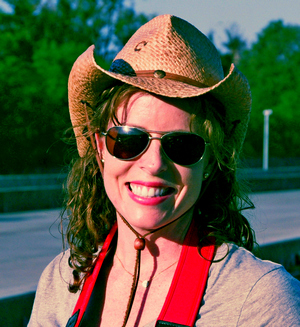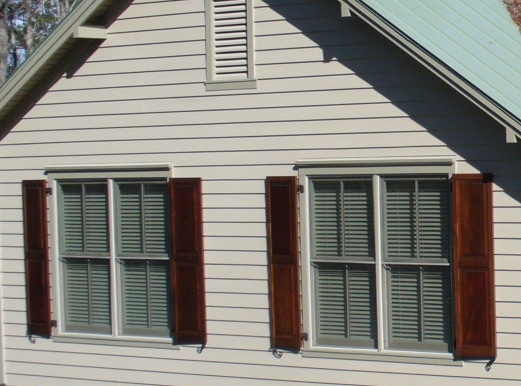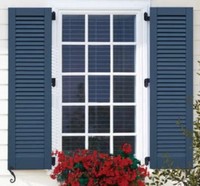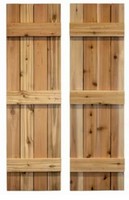09 May May 2020


Office: 843 846 2500
www.WillisSinclair.com
Info@WillisSinclair.com
May 2020
Number 75
Note from the editor:
This month, we are switching from our print newsletter to an email version. We are making the change for several reasons.
One of the reasons is by switching to electronic delivery we have less impact on the environment. We don’t send a huge number of newsletters, but as far as we are concerned, every little bit helps.
With electronic delivery, we cut the 2 week lead time for the printer down to virtually zero.
A third advantage is that we are not tied to what we can fit on two sides of an 8-1/2 x 14 inch piece of paper. With electronic delivery, we can add as many words and photos as we need to discuss our subject.
Yet another advantage is an electronic format makes it easy to share the newsletter. If you think someone would like to read it, just forward it to them. They will have a copy and so will you. If they would like to subscribe, they can send us their email address (newsletter@willissinclair.com) and we will add them to the list. They can also see the newsletters on our web site (https://www.willissinclair.com).
You will typically receive one newsletter per month near the end of the month. We will not share your email address with anyone.
If there are any subjects you would like us to cover or any comments (good or bad) about the newsletter, please call the office (843 846 2500) and speak with Mandy or email us at newsletter@willissinclair.com.
Starting next month, Mandy will join our rotation writing a column for the newsletter. Don’t miss it!

Willis Sinclair, Inc. (dba Willis Sinclair Homes) was 11 years old on April 21. (We were Ponds & Sons for several years before establishing Willis Sinclair in 2009) Our anniversary seemed like a great time for burgers, chips and strawberry delight (thank you, Debby)!

From the desk of Abbey….
What an honor to be the one to write the maiden voyage greeting for our first electronic newsletter! Daddy (Bill) got this all set up and here is our trial issue. If you know of anyone else who would enjoy receiving the newsletters, please let us know.
I read something I absolutely agree with,
“If you’re interested in ‘balancing’ work and pleasure, stop trying to balance them. Instead, make your work more pleasurable.”
It reminds me of another phrase I’ve heard that goes something like,
“Don’t do what you love, love what you do!”
Loving what you do is a bit of a discipline sometimes because we all wind up in those jobs and projects where very little “love” is involved, and yet, something good always comes from that. We only have to decide to see the good and focus on that!
On that note of loving what we do and making sure we are enjoying our work, I want to give a heartfelt “Thank You!” to some very special customers. These are customers for which we have just recently finished projects. In each of these projects we have exceeded the timeline we thought we could meet.
When everything is going great and all seems “right” with the world, sometimes it is easy to show a little more patience, be more forgiving, etc. But in the heat of the moment when things do not seem so perfect, to take that time and show extra patience, appreciation, understanding and to have faith that we are doing our best, it is to that we say “thank you,” “thank you,” “Thank you!” You are such a boost to us, you make us want to try harder and do even better with each project! You are an inspiration and you make our work pleasurable!
Mother’s Day and Father’s Day are just around the corner and I want to wish all you mothers and fathers a wonderful day of celebration! We would not be where we are today if it were not for our parents. I am extremely blessed with mine, as they have helped make me who I am today. They started me with a foundation stronger than they had and then gave me a hand up to stand on their shoulders. I pray that the foundation I am laying will be even stronger so that others are able to build on it and give others a hand up as well!
In closing, I would like to leave you with a quote which speaks to our foundation and that of our country.
“… I sought for the key to the greatness and genius of America in her harbors…; in her fertile fields and boundless forests; in her rich mines and vast world commerce; in her public school system and institutions for learning. I sought for it in her democratic Congress and her matchless Constitution. Not until I went into the churches of America and heard her pulpits flame with righteousness did I understand the secret of her genius and power. America is great because America is good, and if America ever ceases to be good, America will cease to be great. The safeguard of morality is religion, and morality is the best security of law as well as the surest pledge of freedom….” -Alexis de Tocqueville (circa 1931)
A lot has changed since the 1800s, but the foundation of this country will never change. Let us not forget where we came from and how we got to where we are today. May we always strive to be better and do better than all of those who came before us so that their work and sacrifices will not be in vain.
God Bless America!
Shutters!
One of the finishing exterior touches on a home is the window treatment, particularly the shutters. There are many choices for you to consider. A new window treatment can even freshen the look of an existing home.
First consider the type of shutter you could select. if you just want to shade the window from the bright South Carolina sun and you want a beach sort of look, maybe you should consider Bahama (or sometimes called Bermuda) shutters.
 Bahama shutters are hinged at the top. They can be opened and closed quickly (in case of a storm, for example). These shutters will provide shade from the bright sun and, if they are sturdily built, protection from some flying debris during a storm. Usually, these shutters are louvered as shown here. This helps keep the shutters light and yet provides shade and wind protection.
Bahama shutters are hinged at the top. They can be opened and closed quickly (in case of a storm, for example). These shutters will provide shade from the bright sun and, if they are sturdily built, protection from some flying debris during a storm. Usually, these shutters are louvered as shown here. This helps keep the shutters light and yet provides shade and wind protection.
A more common shutter in our area is one that hinges on either side of a window (sometimes on one side only). Typically, a window shutter covers half of the window so two are needed for full coverage. Sometimes on a smaller window, only one shutter (the full width of the window) will be used.
 These are traditional shutters. They hinge on the sides of the window. If you look closely, you can see the pintle (or pin) hinges. (The gudgeon is the loop that sits on the pintle.) The shutters will close, but they will not protect the windows because they are too narrow. The shutters are held open by shutter dogs at the bottom of the shutters.
These are traditional shutters. They hinge on the sides of the window. If you look closely, you can see the pintle (or pin) hinges. (The gudgeon is the loop that sits on the pintle.) The shutters will close, but they will not protect the windows because they are too narrow. The shutters are held open by shutter dogs at the bottom of the shutters.
Although shutters were originally used for storm protection, codes now make it difficult to build a shutter that is strong enough to pass the building code impact tests, that will still look good and work well. Typically if a wooden shutter passes for hurricane protection it has to have a sheet of fiberglass attached to the back of the shutter. In many homes, hurricane protection is provided by impact rated windows and that leaves only aesthetics for the shutters.
Today, it is common to have wide windows (or two or more windows close together) as in the home in the photo above. If you wanted shutters to cover the windows you would have basically three choices: Bahama shutters, a single wide shutter on each side or bifold (hinged) shutters. Wide and bifold shutters are not too common because they do tend to sag over time. Again, for the most part, today’s shutters only serve to improve the visual appearance of your home today.
The bifold shutter is a shutter that is hinged so that it when it is unfolded it is twice as wide as its folded width. This shutter can be used if there is not enough room for the width of the shutter (due to a nearby wall, window, door or roof). This adds a bit to the complexity, but it does not look extra wide when it is folded and open. Except for the double thickness, it appears to be a normal shutter. We have used these as hurricane protection (with a fiberglass backing) on one home.
Once you decide if you want shutters that are hinged on the side(s) of the window, then you need to decide how you want it built: louvered, raised panel and board and batten are common choices.
 These are louvered shutters. With quality shutters, the individual louvers are installed between the stiles (vertical side boards). Sometimes a horizontal solid board is added between the top and bottom boards to give the shutter more stability. This center board helps keep the side stiles straight.
These are louvered shutters. With quality shutters, the individual louvers are installed between the stiles (vertical side boards). Sometimes a horizontal solid board is added between the top and bottom boards to give the shutter more stability. This center board helps keep the side stiles straight.
 This is a raised panel shutter. The center portion, rather than being louvers, is a solid panel that is raised in the center. Kitchen cabinets often used raised panels on their doors. These shutters may have one, two or three raised panels vertically. Typically, the taller the shutter, the more panels. Raised panel shutters are probably the most common shutters in our area.
This is a raised panel shutter. The center portion, rather than being louvers, is a solid panel that is raised in the center. Kitchen cabinets often used raised panels on their doors. These shutters may have one, two or three raised panels vertically. Typically, the taller the shutter, the more panels. Raised panel shutters are probably the most common shutters in our area.
Raised panel shutters can be made of vinyl (these are very inexpensive and look it), PVC (which weathers well) and wood. The wood ones may be stained. Any material may be painted.
 Board and batten shutters are just vertical boards tied together with horizontal (and sometimes a diagonal) boards. These shutters can be synthetic or wood (or even aluminum). Board and batten shutters have a rustic look, but they can add character to your home’s exterior.
Board and batten shutters are just vertical boards tied together with horizontal (and sometimes a diagonal) boards. These shutters can be synthetic or wood (or even aluminum). Board and batten shutters have a rustic look, but they can add character to your home’s exterior.
Once you have decided on the shutter style, material and finish, you need to consider the hardware you want. In some cases, shutters are just fastened to your house and serve purely for aesthetic purposes.
If you do decide you want operational shutters, you will need to pick the style of the hardware and the material. Hinges and dogs (hold backs) come in a number of different sizes and shapes. Depending on the height and weight of your shutters, you may want to use three or four hinges on each side rather than just two.
Stainless steel hardware is more expensive than mild steel, but it will not rust. Stainless hardware does not generally have the wrought iron look of mild steel hardware and that might be important to you. Perhaps you might want a bit of rust on your hardware to give your home a more rustic look. But keep in mind that over time, as rust continues, it will be more difficult to operate the shutters.
You will also need to decide the style of fasteners you want. You could choose a simple latch (like a large screen door latch), a slide bolt or maybe no latching mechanism — if you don’t intend to close the shutters. The latching hardware can be mounted on either the inside or outside of the shutters when they are closed. Where they are positioned depends on how the shutter is constructed and how you intend to latch them when you close them. If you have second story windows it is nice to be able to close and latch them from inside your house.
Do you need help batting around ideas? Call us (843 846 2500). We will be glad to discuss shutters with you in detail (or anything else concerning your home for that matter). No cost and no obligation, of course. Call us. We can help!
Next month (June) we will be passing along some ideas and tips for preparing for the 2020 hurricane season.
 Although there are few hurricanes actually in June, the official season is June 1 through November 30. The most active months are August, September (the most active month) and October. AccuWeather’s 2020 forecast (aka wild guess) predicts an above average number of storms this year. We can help you prepare. Call us.
Although there are few hurricanes actually in June, the official season is June 1 through November 30. The most active months are August, September (the most active month) and October. AccuWeather’s 2020 forecast (aka wild guess) predicts an above average number of storms this year. We can help you prepare. Call us.





No Comments